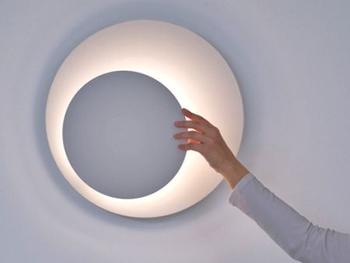Deep Thinking of "Chinese Style" LED Industry
 Recently, the prospects for the development of LED light sources have been questioned again. "Energy saving is not money saving," "Neither energy saving nor money saving," "Carnival sequelae are highlighted," "Repetition of the PV industry, "All-use public lighting is dangerous." Such as the frequent media, LED light source is in an uncertain future, and it is urgent for industry professionals to answer questions.
Recently, the prospects for the development of LED light sources have been questioned again. "Energy saving is not money saving," "Neither energy saving nor money saving," "Carnival sequelae are highlighted," "Repetition of the PV industry, "All-use public lighting is dangerous." Such as the frequent media, LED light source is in an uncertain future, and it is urgent for industry professionals to answer questions. LED light source sinks into the deadlock
Not long ago, Taiwan’s Taichung City Council decided, after reviewing the budget, that the news of the removal of 79 million LED subsidies would be of intensive concern. Li Zhongzhong, a member of the Legislative Council, said that the lack of illumination of LED street lights and the high failure rate resulted in maintenance costs after subsidizing the installation of street lights. This did not save money.
Coincidentally, Guangdong's push for public lighting within three years has recently been strongly questioned. Industry sources believe that regional mandatory replacement technology is not mature, and LED lighting products with low technological content cannot be questioned. The bigger problem is that LED lighting products need to consume a large amount of non-ferrous metal resources, which is inconsistent with the national energy conservation and low-carbon policy. Therefore, the use of LEDs in public lighting has certain risks.
The future is uncertain LED lighting industry should rethink how to develop After years of carnival, the LED lighting industry's aftermath continues to show up, and its reshuffle period probably will continue until mid-2014. If LED lighting companies do not see the market environment in a timely manner, it is possible to repeat the recovery of the photovoltaic industry.
For a while, LED light sources that have been favored by the government and the industry have been caught in an uncertain future. At the same time, from another perspective, the chaos after the industry began to calmly ponder the future direction of LED light sources.
Be wary of "doing bad things"
A few days ago, people in Shanghai said that LED lighting in Shanghai was once the government’s eye-catcher, and most LED chip companies have given huge subsidies. However, since the beginning of this year, companies that have received subsidy have not achieved any results. The source claimed that Shanghai began to curb the development of LED lighting. In 2009, the Yangzhou City Government of Jiangsu Province introduced the MOCVD subsidy policy, which has led other Chinese local governments to follow suit. However, at the beginning of last year, Yangzhou halted the MOCVD subsidy policy, and MOCVD subsidy has been gradually halted. Obviously, if the informed person reveals that Shanghai will begin to curb the development of LED light sources, then this is very likely to be a microcosm of LED light source development in the country. Local governments have also become more rational about the development of LED light sources.
LED development so far, the introduction of policy subsidies one by one, from upstream equipment to downstream applications procurement readily available. However, in the end, how many companies are really committed to research and development, expansion of production, and contribution to the development of the industry, rather than as "spending money" to spend their own? If the subsidy is in place, the development of the enterprise will not be effective. What kind of measures should the government use to save? Do you need to take legal procedures for accountability? Or can the people's hard-earned money be lost without investigation? In addition, what kind of situation will the subsidized enterprises face after the huge financial subsidy policy is terminated? What impact will this have on the industry? These important issues require deep thinking.
From now on, the government subsidy is understandable, but the development path of guiding ideology and choice should obviously be re-thought and vigilance turned into a “good intention to do bad thingsâ€.
Peel Mask PCB
Peel able masks are used in order to protect selected solder holes against plugging during mass soldering or to protect carbon elements and gold plated contacts during mass soldering. Peel able masks are screen printed.
Requirements
• The peelable mask must adhere sufficiently well to the PCB so that it does not peel off when handled correctly.
• It must be able to endure a two to three time soldering process without peeling off, but must remain detachable.
•After soldering of the PCB, the peelable mask must be able to be detached – preferably in one piece. In case of metallized holes, no mask
residue must be left in the drill holes or on the surface of the PCB. In the case of non-metallized drill holes, however a certain amount of residue
can remain.
• The peelable mask must be able to resist conventional solvents such as chlorinated and fluorinated hydrocarbons, isopropanol, conventional
fluxes and similar.
• Particular requirements: The roughness U of the edge of the mask can be 0,5 mm from the tip to the base (left figure
below).
Peel Mask Board,Green Peel Mask Board,Quick Turn Peel Mask Board,Mask Board
Storm Circuit Technology Ltd , http://www.stormpcb.com